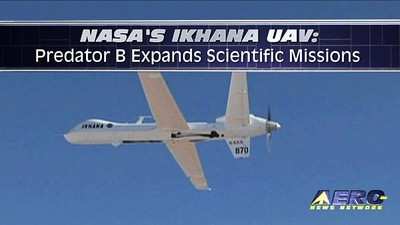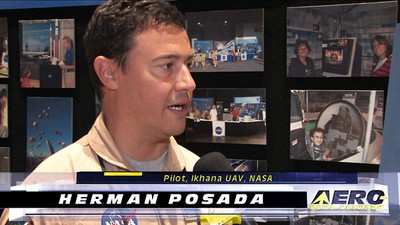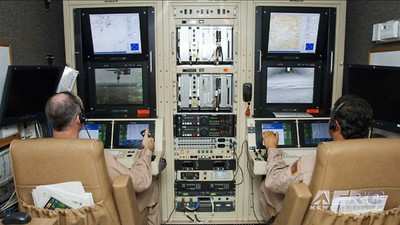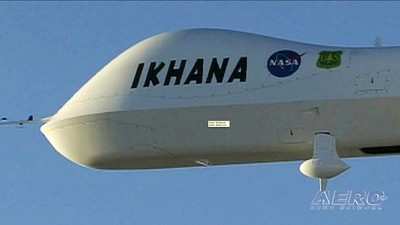Tue, Mar 16, 2010
NASA's Ikhana unmanned science and technology development
aircraft is a Predator B unmanned aerial system. It was acquired by
NASA's Dryden Flight Re-search Center to support Earth science
missions and advanced aeronautical technology development.

The aircraft, named Ikhana, acts as a testbed to develop
capabilities and technologies to improve the utility of unmanned
aerial systems. NASA obtained the aircraft from the manufacturer,
General Atomics Aeronautical Systems, in November 2006. Ikhana is a
Native American Choctaw word meaning intelligence, conscious or
aware. The name is descriptive of the research goals NASA has
established for the aircraft and its re-lated systems.

The aircraft, designed for long-endurance, high-altitude flight,
has been modified and instrumented for use in multiple civil
research roles. NASA's Suborbital Science Program within the
Science Mission Directorate is Ikhana's primary customer, using the
aircraft for Earth science studies. A variety of atmospheric and
remote sensing instruments, including duplicates of those sensors
on orbiting satellites, can be installed to collect data during
flights lasting up to 30 hours. The Suborbital Science Program uses
both manned and unmanned aircraft to collect data within the
Earth's atmosphere, complementing measurements of the same
phenomenon taken from space and those taken on the Earth's
surface.

NASA's Aeronautics Research Mission Directorate will also use
the aircraft for advanced aircraft systems research and technology
development. Initial experiments will look into the use of fiber
optics for wing shape sensing and control and structural loads
measurements. NASA's Ikhana unmanned science aircraft ground
control station includes consoles for two pilots and positions for
scientists and engineers along the side.

NASA's Ikhana/Predator B has a wingspan of 66 feet and is 36
feet long. More than 400 pounds of sensors can be carried
internally and over 2,000 pounds in external under-wing pods.
Ikhana is powered by a Honeywell TPE 331-10T turbine engine and is
capable of reaching altitudes above 40,000 feet. The Ikhana is the
first production Predator B equipped with a digital electronic
engine controller developed by Honeywell and GA-ASI that made
Ikhana five to 10 percent more fuel efficient than earlier versions
of the aircraft.
More News
Aero Linx: Model Aeronautical Association of Australia MAAA clubs are about fun flying, camaraderie and community. For over 75 years, the MAAA has been Australia’s largest fl>[...]
Touchdown Zone Lighting Two rows of transverse light bars located symmetrically about the runway centerline normally at 100 foot intervals. The basic system extends 3,000 feet alon>[...]
“Discovery and innovation are central to our mission at Virgin Galactic. We’re excited to build on our successful record of facilitating scientific experiments in subor>[...]
How To Get A Story On Aero-TV News/Feature Programming How do I submit a story idea or lead to Aero-TV? If you would like to submit a story idea or lead, please contact Jim Campbel>[...]
Student Pilot Reported That During Rotation, “All Of A Sudden The Back Of The Plane Kicked To The Right..." Analysis: The student pilot reported that during rotation, “>[...]
 ANN's Daily Aero-Linx (05.02.24)
ANN's Daily Aero-Linx (05.02.24) ANN's Daily Aero-Term (05.02.24): Touchdown Zone Lighting
ANN's Daily Aero-Term (05.02.24): Touchdown Zone Lighting Aero-News: Quote of the Day (05.02.24)
Aero-News: Quote of the Day (05.02.24) ANN FAQ: Contributing To Aero-TV
ANN FAQ: Contributing To Aero-TV NTSB Final Report: Cirrus Design Corp SR20
NTSB Final Report: Cirrus Design Corp SR20






